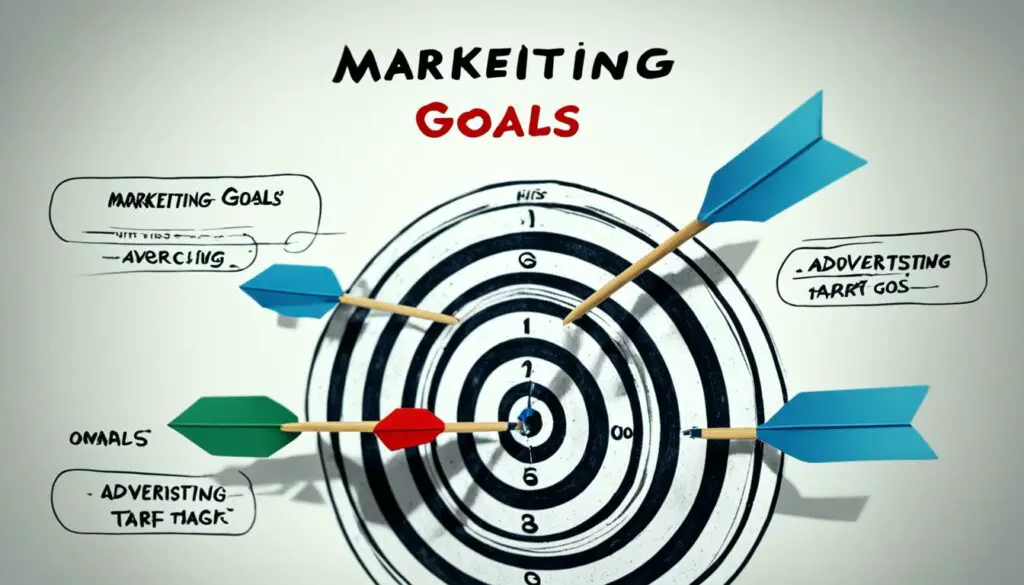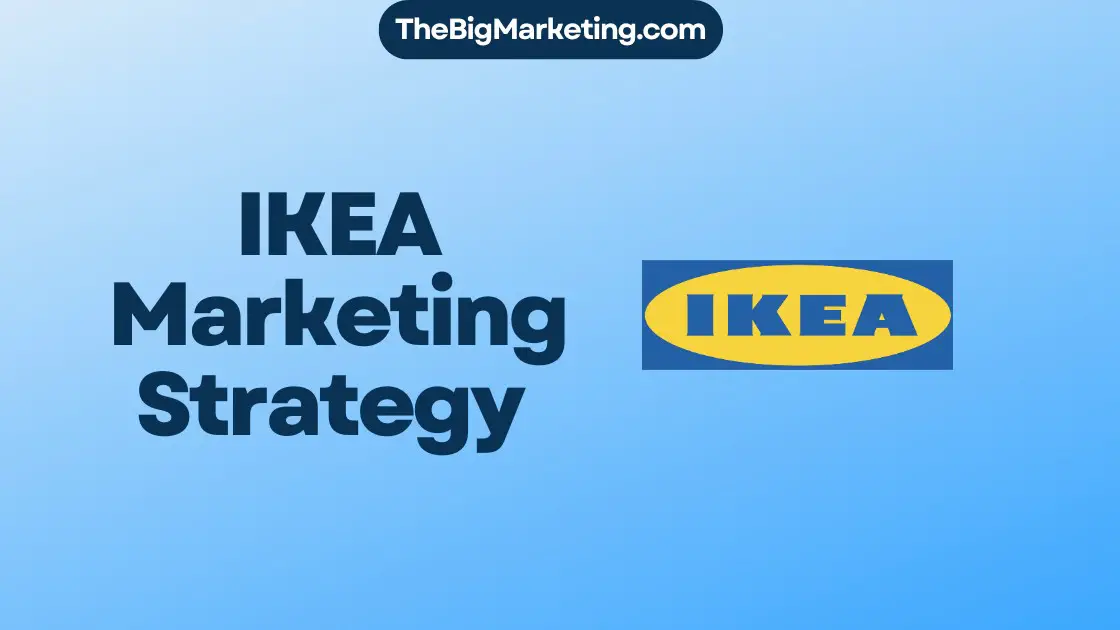Marketing and advertising are two similar words that are often used interchangeably. However, they have different meanings and functions. Marketing involves activities such as market research, audience analysis, pricing, and promotion. Advertising, on the other hand, focuses on getting the public to notice a product or service through paid announcements or advertisements. Understanding the distinctions between marketing and advertising is essential for businesses to leverage their benefits effectively.
In this comprehensive guide, we will compare direct marketing and advertising, highlighting their benefits, differences, and strategies for effectiveness. We will explore how each approach targets specific audiences, delivers a return on investment (ROI), and adapts to the digital marketing landscape. Whether you’re a business owner, marketer, or advertiser, this guide will provide valuable insights to help you make informed decisions and drive successful campaigns.
Key Takeaways:
- Marketing and advertising have distinct meanings and functions.
- Direct marketing is a personalized approach that directly engages with the target audience.
- Advertising focuses on influencing consumer behavior and increasing brand exposure.
- Understanding the differences and strengths of both approaches is crucial for effective marketing and advertising strategies.
- Target audience engagement and measurable success are key factors in evaluating the effectiveness of direct marketing and advertising campaigns.
The Marketing Mix: Key Elements of Marketing
The marketing mix is a fundamental framework that comprises key elements for devising a successful marketing strategy. These elements include product, price, place, and promotion.
The Four P’s of Marketing
The marketing mix is commonly represented by the four P’s: product, price, place, and promotion. Let’s explore each element in more detail:
- Product: This refers to the goods or services that a business offers to its target audience. It involves understanding customer needs, developing compelling features, and ensuring superior quality.
- Price: Price determines the monetary value assigned to a product or service. Businesses must consider factors such as production costs, competition, and customer willingness to pay when setting the price.
- Place: Place refers to the distribution channels and locations where a product or service is made available to consumers. It involves identifying the most suitable channels, such as retail stores, e-commerce platforms, or wholesalers.
- Promotion: Promotion encompasses all the activities undertaken to communicate the value of a product or service to the target audience. It includes advertising, public relations, sales promotions, and other promotional tools.
In addition to the four P’s, service-oriented businesses often consider three additional elements known as the seven P’s: people, process, and physical evidence. These elements are crucial in creating a positive service experience and building customer satisfaction.
Comparison of the Marketing Mix Elements
| Element | Description |
|---|---|
| Product | Refers to the goods or services offered by a business |
| Price | Determines the monetary value assigned to a product or service |
| Place | Refers to the distribution channels and locations where a product or service is made available |
| Promotion | Encompasses all activities to communicate the value of a product or service |
| People | Refers to the employees or individuals involved in delivering a service |
| Process | Includes the steps and procedures followed in delivering a service |
| Physical Evidence | Includes tangible elements that support the delivery of a service |
By considering these key elements, businesses can effectively identify their target audience, meet their needs and wants, and develop strategies that maximize the impact of their marketing efforts.
Understanding Advertising and the Hierarchy of Effects Model
Advertising is a powerful tool that has a significant impact on consumer behavior. By understanding the hierarchy of effects model, advertisers can create effective campaigns that resonate with their target audience and drive them to make a purchase.
The hierarchy of effects model is a theoretical framework that outlines the stages consumers go through when exposed to advertising. These stages include:
- Awareness: Consumers become aware of a product or service through advertising.
- Knowledge: Consumers acquire information and knowledge about the product or service.
- Liking: Consumers develop positive feelings towards the product or service.
- Preference: Consumers prefer the advertised product or service over competitors.
- Conviction: Consumers develop a strong belief in the value and benefits of the product or service.
- Purchase: Consumers make a purchase based on their conviction in the product or service.
Each stage represents a different level of engagement and intention to purchase. Effective advertising efforts should aim to move consumers through these stages, ultimately driving them to make a purchase.
By utilizing various advertising techniques and strategies, advertisers can create impactful campaigns that engage consumers and guide them towards the desired action. Whether it’s through compelling storytelling, persuasive messaging, or targeted promotions, the hierarchy of effects model serves as a roadmap for advertisers to connect with their audience and achieve measurable results.
To further illustrate the effectiveness of the hierarchy of effects model in advertising, consider the following table:
Responsibilities of Marketing and Advertising Departments
The marketing and advertising departments play distinct roles within an organization, each with their own set of responsibilities. Understanding these responsibilities is crucial for effective collaboration and achieving the desired business outcomes.
Marketing Responsibilities
The marketing department focuses on various key responsibilities, including:
- Branding: Developing and maintaining the brand image and identity.
- Customer Relations: Building and nurturing relationships with customers to enhance loyalty and satisfaction.
- Tracking Trends: Continuously monitoring market trends, consumer behavior, and industry developments.
- Audience Analysis: Conducting research and analyzing target audiences to understand their needs, preferences, and behaviors.
In addition to these responsibilities, the marketing department also plays a vital role in finding strategic partners, managing strategy and research, and overseeing market positioning and segmentation.
Advertising Responsibilities
The advertising department, on the other hand, has its own distinct set of responsibilities, including:
- Creatives Production: Researching, conceptualizing, and overseeing the production of engaging and persuasive advertisements.
- Media Buying: Identifying and selecting the most suitable media channels to reach the target audience effectively.
- Target Audience Analysis: Conducting in-depth analysis of the target audience’s media consumption habits and preferences.
- Pitching Advertising Plans: Creating compelling presentations to pitch advertising strategies and campaign concepts to clients or internal stakeholders.
In addition, the advertising department facilitates communication between teams and ensures seamless coordination during the execution of advertising campaigns.
Both departments contribute significantly to the overall marketing and advertising strategy of an organization, collaborating closely to achieve mutual objectives and drive business growth.
Goals of Marketing and Advertising
Both marketing and advertising serve specific goals that contribute to the overall success of a business. These goals are essential in guiding marketing and advertising strategies to generate optimal results.
Marketing Goals
Marketing goals encompass a variety of objectives that businesses aim to achieve through their marketing efforts. These goals include:
- Generating leads: Attracting potential customers and capturing their contact information to initiate the sales process.
- Increasing sales: Boosting revenue by driving more purchases of products or services.
- Building brand loyalty: Fostering a strong connection between customers and the brand to encourage repeat purchases and advocacy.
- Influencing consumer purchasing decisions: Convincing consumers to choose the brand’s offerings over competitors.
Furthermore, marketing goals often involve identifying opportunities for upselling and cross-selling, enhancing customer satisfaction, and successfully launching new products or initiatives.
Advertising Goals
Advertising goals are focused on leveraging persuasive communication tactics to engage the target audience and strengthen the brand’s position in the market. Key advertising goals include:
- Influencing consumer purchasing decisions: Encouraging consumers to make a purchase by highlighting the unique selling points and benefits of the product or service.
- Maintaining a strong brand reputation: Establishing a positive perception of the brand among the target audience and the general public.
- Increasing brand loyalty: Developing a loyal customer base that consistently chooses the brand’s offerings.
- Creating top-of-mind awareness: Ensuring the brand remains prominently in consumers’ minds when making purchasing decisions.
- Attracting first-time buyers: Enticing individuals who have never purchased from the brand before.
- Motivating repeat purchases: Encouraging customers to continue buying from the brand and fostering their loyalty.
By aligning these goals with overall business objectives, marketing and advertising efforts can work in synergy to drive desired outcomes such as lead generation, sales growth, brand loyalty, and influence over consumer purchasing decisions.

Without “The sequel follows….”, “comments” and “other explanations”.
Channels in Marketing and Advertising
Both marketing and advertising campaigns utilize various channels to reach their target audience. These channels play a crucial role in connecting businesses with their potential customers and driving successful campaigns. By understanding and effectively using the right channels, businesses can maximize their reach and engagement. Let’s explore some of the popular marketing and advertising channels:
Inbound Marketing
Inbound marketing focuses on attracting and engaging customers through relevant and valuable content. This approach aims to provide helpful information and solutions to potential customers, drawing them towards the brand organically.
Content Marketing
Content marketing involves creating and distributing valuable content, such as blog posts, videos, infographics, and eBooks, to attract, engage, and retain a target audience. By offering relevant and informative content, businesses can position themselves as industry experts and build credibility.
Search Engine Optimization (SEO)
SEO is the practice of optimizing a website’s visibility on search engine results pages. By targeting specific keywords and optimizing website content, businesses can improve their organic search rankings and attract more relevant traffic.
Social Media Marketing
Social media platforms, such as Facebook, Instagram, Twitter, and LinkedIn, provide opportunities for businesses to reach and engage with their target audience. Social media marketing involves creating and sharing content, running paid advertising campaigns, and interacting with followers to build brand awareness and drive conversions.
Email Marketing
Email marketing allows businesses to directly communicate with their audience through personalized emails. By segmenting the audience and delivering tailored messages, businesses can nurture leads, build customer loyalty, and drive conversions.
Affiliate Marketing
Affiliate marketing involves partnering with individuals or businesses (affiliates) who promote a product or service in exchange for a commission. This channel leverages an affiliate’s network to reach a wider audience and drive sales.
Influencer Marketing
Influencer marketing focuses on collaborating with influential individuals on social media platforms to promote a product or service. By leveraging the influencer’s credibility and followers, businesses can expand their reach and engage with a highly targeted audience.
Word of Mouth Marketing
Word of mouth marketing relies on customers spreading positive experiences and recommendations to others. This organic channel can be enhanced through exceptional customer service, referral programs, and incentivizing satisfied customers to share their experiences.
Offline Marketing
Offline marketing channels include traditional methods like print advertising, direct mail, billboards, radio, and television. These channels allow businesses to reach a broader audience and create brand awareness through traditional media.
Website Marketing
Website marketing focuses on optimizing a company’s website for user experience, search engines, and conversions. By utilizing website design, landing pages, and compelling call-to-actions, businesses can effectively drive traffic and convert visitors into customers.
Brand Marketing
Brand marketing aims to establish and promote a company’s brand image and reputation. It involves creating a consistent brand identity, messaging, and visual elements across various marketing channels to build recognition and loyalty.
Advertising Channels
While marketing channels focus on a broader approach to promoting and engaging with the target audience, advertising channels concentrate on specific paid advertising methods. These channels can include traditional methods like TV, radio, print, billboards, as well as digital channels like online ads and social media advertising.
Now, let’s take a look at a table summarizing these channels:
| Marketing Channels | Advertising Channels |
|---|---|
| Inbound Marketing | TV |
| Content Marketing | Radio |
| SEO | |
| Social Media Marketing | Billboards |
| Email Marketing | Online Ads |
| Affiliate Marketing | Social Media Advertising |
| Influencer Marketing | – |
| Word of Mouth Marketing | – |
| Offline Marketing | – |
| Website Marketing | – |
| Brand Marketing | – |
Understanding the diverse range of marketing and advertising channels allows businesses to tailor their strategies to reach their target audience effectively. It is essential to select the most appropriate channels based on the audience demographics, business objectives, and available resources. By leveraging the right channels, businesses can maximize their marketing and advertising efforts, drive engagement, and achieve measurable results.
Direct Marketing: Reaching the Target Audience
Direct marketing is a powerful strategy that allows businesses to connect directly with individual consumers through targeted communication channels. Unlike other forms of marketing that rely on third parties, direct marketing aims to personalize the message and establish direct engagement with the target audience.
Direct marketing utilizes segmentation and personalization techniques to ensure that the message resonates with the recipient. By targeting specific prospects and crafting personalized communication, businesses can generate higher conversion rates and cost-effective results.
One subset of direct marketing is direct response marketing, which focuses on encouraging immediate responses from the audience through calls to action. This can be achieved through various channels, such as direct mail, email marketing, telemarketing, or online advertising.
By leveraging the power of direct marketing, businesses can:
- Efficiently target prospects who are most likely to be interested in their products or services.
- Create personalized messages tailored to the needs and preferences of individual prospects.
- Establish direct communication channels to engage with prospects and build relationships.
- Drive immediate responses and measurable outcomes through well-crafted calls to action.
Here’s an example of how direct marketing can be implemented:
XYZ Company, a leading provider of skincare products, wants to promote its new line of anti-aging creams. They decide to launch a direct marketing campaign targeting women aged 35-55 who have previously purchased skincare products online.
The campaign includes personalized emails with customized product recommendations based on each recipient’s previous purchases, along with a limited-time discount offer. XYZ Company also utilizes social media advertising to reach a wider audience within the target demographic.
The personalized messages and targeted approach of this direct marketing campaign help XYZ Company to effectively engage with their prospects, increase brand awareness, and drive sales.
| Benefits of Direct Marketing | Challenges of Direct Marketing |
|---|---|
|
|
Direct marketing offers businesses the opportunity to create highly personalized and targeted campaigns that can yield impressive results. However, it is crucial to carefully manage communication channels and ensure that the messages are relevant and well-received by the recipients.
Next, we will explore the advantages and disadvantages of direct marketing in more detail. Understanding these factors will help businesses make informed decisions and develop effective direct marketing strategies.
The Advantages and Disadvantages of Direct Marketing
Direct marketing offers several advantages for businesses seeking to drive successful campaigns and achieve measurable results. By directly reaching out to the most interested prospects, businesses can experience high conversion rates and maximize their return on investment. Through targeted campaigns, personalized messaging, and direct communication channels, direct marketing enables businesses to effectively engage their target audience and increase the likelihood of conversions.
One of the primary advantages of direct marketing is its ability to deliver targeted campaigns. By carefully selecting the target audience and tailoring the message to their specific needs and preferences, businesses can ensure that their marketing efforts resonate with the right people. This level of personalization helps to establish trust, enhance brand loyalty, and increase the chances of converting prospects into customers.
Direct marketing also provides measurable results, allowing businesses to track the success of their campaigns and make data-driven decisions to optimize their marketing strategies. Through various tracking and analytics tools, businesses can monitor key performance indicators and adjust their tactics accordingly, ensuring that they are consistently improving their marketing efforts.
However, direct marketing does come with its disadvantages. If not executed properly, direct marketing efforts have the potential to annoy or irritate recipients, leading to negative associations with the brand. Businesses must be mindful of their messaging, frequency of communication, and targeting strategies to avoid alienating their audience.
In addition, direct marketing lacks the profile-raising and image-building benefits that come with third-party accreditation. While direct marketing may generate high conversion rates, it may not contribute to building a brand’s reputation or increasing its visibility in the market. This is where other forms of marketing, such as advertising or public relations, play a crucial role in enhancing a business’s image and raising its profile.
Overall, understanding the strengths and limitations of direct marketing is essential for businesses to develop successful campaigns. By leveraging the advantages of high conversion rates, targeted campaigns, personalized messaging, and measurable results, businesses can drive cost-effective marketing efforts. However, it is crucial to balance direct marketing with other strategies that focus on profile-raising and image-building to ensure long-term success in the market.
Conclusion
Direct marketing and advertising are integral components of a well-rounded strategic marketing approach. While marketing focuses on building relationships, crafting effective strategies, and reaching target audiences, advertising plays a crucial role in influencing consumer behavior and increasing brand exposure. By understanding the differences between direct marketing and advertising and leveraging their respective strengths, businesses can effectively engage their target audience, measure success, and drive tangible results.
Implementing a comprehensive marketing and advertising strategy is vital for sustainable business growth. Direct marketing allows businesses to establish personalized connections with their audience, leveraging targeted campaigns and direct communication. On the other hand, advertising enables businesses to create wider brand awareness and influence consumer purchasing decisions through various channels.
By combining direct marketing and advertising, businesses can harness the power of strategic marketing to engage their target audience, generate measurable success, and ultimately drive business growth. Through carefully crafted marketing campaigns and impactful advertisements, businesses can create lasting impressions, increase brand loyalty, and enhance their competitive edge in the marketplace. Investing in a well-rounded marketing and advertising strategy is imperative for businesses looking to thrive in today’s competitive landscape.
FAQ
What is the difference between direct marketing and advertising?
Direct marketing involves personalized communication that directly engages with individual consumers, while advertising focuses on influencing consumer behavior and increasing brand exposure through paid announcements or advertisements.
What are the key elements of the marketing mix?
The key elements of the marketing mix are product, price, place, and promotion. For service-oriented businesses, the seven P’s also include people, process, and physical evidence.
What is the hierarchy of effects model in advertising?
The hierarchy of effects model outlines the stages consumers go through when exposed to advertising, including awareness, knowledge, liking, preference, conviction, and purchase.
What are the responsibilities of the marketing and advertising departments?
The marketing department focuses on branding, customer relations, market research, and strategy, while the advertising department is responsible for creative production, target audience analysis, media buying, and communication.
What are the goals of marketing and advertising?
Marketing goals include generating leads, increasing sales, boosting customer satisfaction, and launching new products. Advertising goals focus on influencing purchasing decisions, increasing brand loyalty, and creating brand awareness.
What are the channels used in marketing and advertising?
Marketing channels include inbound marketing, content marketing, social media marketing, and affiliate marketing. Advertising channels can include TV, radio, print, billboards, online ads, and social media advertising.
What is direct marketing and how does it reach the target audience?
Direct marketing involves personalized communication that directly engages with targeted prospects through channels like direct mail, emails, or phone calls.
What are the advantages and disadvantages of direct marketing?
The advantages of direct marketing include high conversion rates, targeted campaigns, personalized messaging, and measurable results. Disadvantages can include potential annoyance or negative perception if not executed properly and a lack of third-party accreditation benefits.








